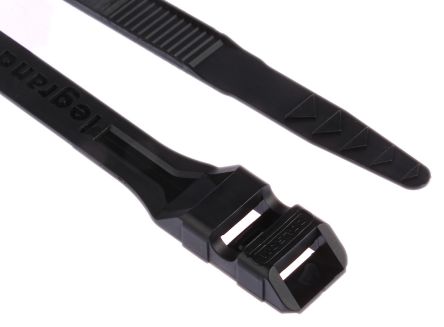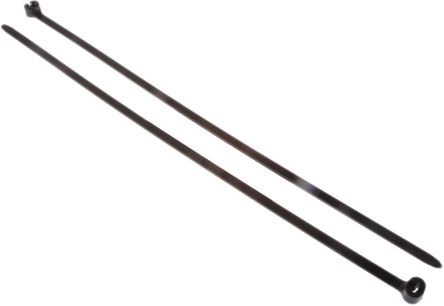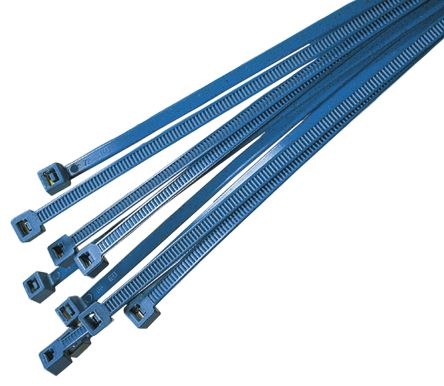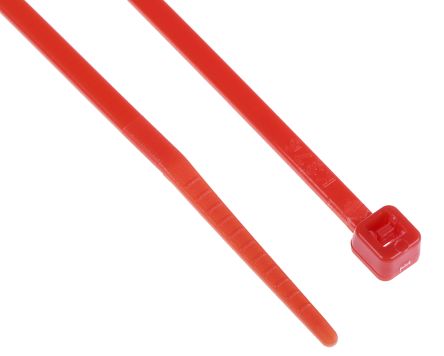|
|
What is a cable tie?
A cable tie is a type of fastener used for holding items together, most commonly electrical cables or wires.
Standard cable ties are usually made from nylon grade 6.6 and are used to bundle items. Functioning like straps to keep cables tidy, they’re available in a range of sizes from small to large.
Cable ties are also referred to as:
-
- Zip tie/zipper tie
- Wire tie
- Hose tie
- Steggel tie
- Mouse belt
- Rat belt
- Wire wrap
- Zap strap
- Tie wraps
The design of a cable tie includes a head which provides the slot for the tape to be pulled through, to make a loop. The cable can be pulled through the slot until the preferred loop is achieved and then the excess cable can be cut off.
When threaded through the slot, the teeth of the cable form a lock which can’t be pulled back through.
Who invented cable ties?
Cable ties were first invented and patented in 1958 by an electrical manufacturing company in America called Thomas & Betts. They were introduced under the brand name ‘Ty-Rap’ and the basic design of cable ties has barely changed since they were first created.Thomas & Betts was formed in 1898 by Robert M. Thomas and Hobart D. Betts – two young engineers who’d just graduated from Princeton University. The company was then taken over by Swedish-Swiss technology company ABB Group in 2012.
‘Ty-Rap’ cable tie inventor, Maurus C. Logan, worked at Thomas & Betts for many years and finished his career with the company as Vice President of Research and Development.
Cable ties were originally invented for use in the aviation industry. They were first developed to solve the problem of bundling the hundreds of feet of wiring found inside commercial aircrafts, and can now be found as cable tidies virtually everywhere – from racing car engines to tool sheds.
The first cable ties were made from stainless steel, but were then changed to be made from plastic and nylon in the 1970s. The first nylon cable tie had a steel pawl attached, before the first all-nylon cable tie was produced in 1968. This self-locking, one piece cable tie was very similar to the cable ties in present day.
Though stainless steel cable ties are still manufactured, plastic and nylon ties have become more popular thanks to the variety of colours. There are now numerous varieties of cable tie including beaded, releasable, pull tight, parallel entry, and tear-off forms. They’re also available in ladder styles and some can hold ID tags.
Self-fastening and almost indestructible, the design of the cable tie solves a complex problem with a simple technology and is a great product to use as a cable tidy in any environment.
What are the different types of cable tie?
There are many different types of cable tie, including heavy-duty metal ties, plastic ties, and Velcro cable ties in the form of a Velcro strap. Here are some of the main types:● Standard cable ties
This type of cable tie is a one-piece, self-locking fastener. They’re normally considered as single-use and can handle bundling requirements from 14mm to 360mm and tensile loop strength from 8 to 144kg. Standard cable ties can be purchased in a wide variety of colours and the width of the ties can also vary.
● Releasable cable ties
Releasable cable ties are becoming more popular. They can be used more than once and are ideal for work on prototypes, as they can be easily reopened to allow new wires to be added to a bundle. A releasable cable tie incorporates a lever or button that takes about 20kg of force. Standard colours are white or black nylon, however, some cable ties in different colours are starting to appear on the market, for example, green cable ties for horticultural uses.
● Mounted head cable ties
Mounted head cable ties are designed to incorporate a mounting hole. This allows the cable tie to be fastened by a screw, so it can be fixed to a vehicle chassis, panel or wall. These types of cable ties can be used for bundle strengths of between 20 and 60kg. Standard colours are normally black or natural nylon.
Interesting fact: Black is the best colour to use if cable ties will be exposed to sunlight because the black carbon additive used for the colour also provides UV protection.
● Push mount cable ties
Push mount cable ties have a built-in mounting device which can allow cables to be attached to a panel or chassis without any additional fixings. The mount part of the tie is easily inserted into a pre-drilled hole and locks into place. Arrow nose, drive rivet and blind hole stud cable ties are available.
● Self-adhesive cable ties
Self-adhesive ties remove the need for a cable tie and separate cradle. This type of cable tie is ideal for tasks where a fast and easy fixing by hand is needed.
● Double-headed cable ties
These cable ties are ideal for running two parallel cables that need to be separated. They allow a second cable run to be installed without the need for additional cable ties.
● Stainless steel cable ties
Stainless steel cable ties are most common in automotive or industrial setting, or any applications where a nylon cable tie isn’t up to the task. This could be harsh environments or atmospheres where there's heat.
A variety of steel cable tie size options are available, with the standard being the 200mm or 360mm option, in two width sizes of 4.5mm and 7.9mm.
● Reusable cable ties
Reusable cable ties, also referred to as releasable, are designed to be used more than once, making them very practical. The majority of reusable cable ties use a trigger release while some of them use pawl release. The trigger release mechanism holds everything together tightly and only releases with a human touch. The pawl release button is part of the head ratchet and can be released by pressing the pawl handle down to release the ratchet from the tie so the tail can easily be pulled out.
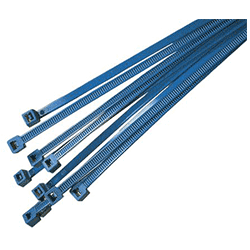 Standard cable tie |
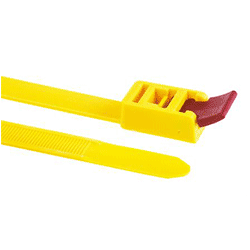 Releasable cable tie |
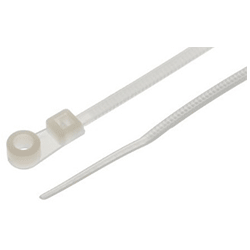 Mounted head cable tie |
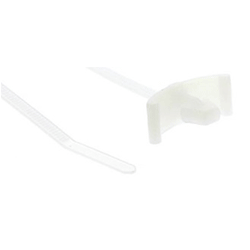 Push mount cable tie |
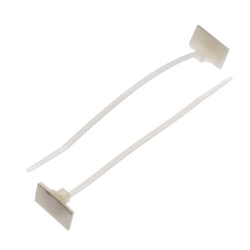 Self-adhesive cable tie |
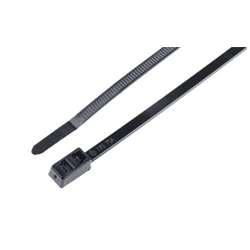 Double-headed cable tie |
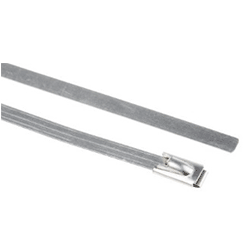 Stainless steel cable tie |
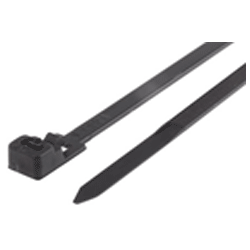 Reusable cable tie |
How to undo cable ties
Cable ties are great for organising wires, but many people don't know that you can reuse them over and over again.
While cable ties typically come in two varieties – single-use and reusable – it’s possible to easily undo a single-use cable tie without having to cut it open so it can be used again.
When trying to undo a traditional cable tie, it can be quite simple. Just stick or a pin or something small in the locking mechanism, press down and slide it out.
But bear in mind that single-use cable ties are designed for that purpose, so even though it’s possible to technically undo them and use them again, the plastic teeth can wear down the more they’re undone and re-tied. Also, manipulating the locking mechanism can damage it, meaning the tie develops a looser grip over time – so refrain from using old ones to tie anything that needs to be really secure.
Which is the best cable tie to use?
With so many different types of cable tie available, it can be hard to know which one to choose. Here are some of the most popular brands of cable tie, which offer an extensive range of lengths, colours and materials. Click through to view the full product range:
